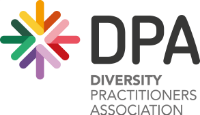What D&I practitioners can learn from NASA’s uniform blunder
/If your newsfeed is anything like mine, this week was flooded with NASA’s epic diversity blunder after announcing, then cancelling, the world’s first all-female spacewalk. Coinciding with women’s history month, astronauts Anne McClain and Christina Koch were scheduled to take part in the first-of-it’s-kind mission as an all-woman team walking outside the international space station. NASA was then forced to advise that only one of the two female astronauts (Koch) would be able to attend the mission... as they only had one size medium space suit, the preferred size of both women.
In their defence, apparently a space suit costs approximately $22m to build, meaning whipping one up at short notice was a less-than-viable option. McClain had trained in a size large before conceding the medium was a better fit. So McClain misses out and will have her spot taken by a male colleague (curiously of the same height). Meanwhile, stunned audiences around the world have been left collectively head-scratching and asking “how did they miss this”?
As a D&I practitioner, I’ve heard my own share of “how did they miss this?” moments much closer to home.
Stories of organisations implementing industry-leading parental leave provisions, while onsite breastfeeding facilities are dirty and desolate. Tales of businesses spending thousands of dollars on marketing to attract female candidates, then appointing successful women to locations with only male bathroom facilities. Establishing extensive talent pipelines to ensure representation of First Nations employees, then flinching at requests for extra leave to travel home for Sorry Business. Taking time to understand individual accessibility requirements then failing to cater for them at team meetings.
Trail blazers often carry the burden of being considered representatives of their entire demographic group, their perceived success or failure - while often not entirely in their control - enables or constrains those who follow in their footsteps. Historically, they’ve often needed superior skills to be considered equally capable. Too regularly they become the unwitting explorers of previously-invisible barriers... like inadequate supplies of uniforms, insufficient facilities and inflexible ways of working. As a female tradesperson struggling to source appropriately sized PPE once told me “It’s just another sign that we literally don’t fit... amongst so many other symbols that say you don’t belong here. It’s hard sometimes not to throw in the towel.”
Symbols matter.
As D&I change makers, we all want innovative solutions and fist-pumping indicators of progress as we push the boundaries toward equality. Our desire to evolve regularly sends us in search of new solutions to solve old problems. But if the NASA experience reminded us of anything this week, it’s the importance of making sure we have the basics right.
We need to return to base, check the uniform cupboard and ask our people what they need well before we announce lift off. Let’s make sure we’re covering the basics while also casting our gaze to infinity and beyond.













